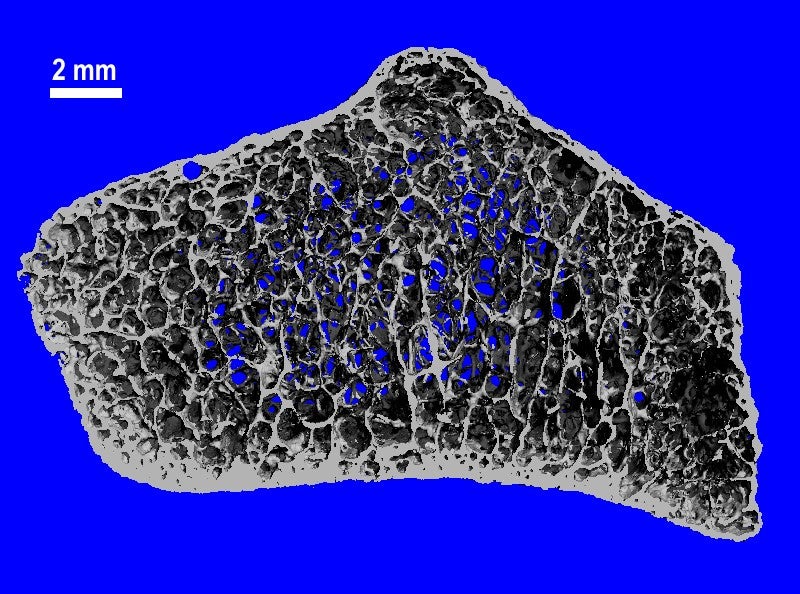The Independent's journalism is supported by our readers. When you purchase through links on our site, we may earn commission.
Space leaves astronaut bones weak, but deadlifts help keep them strong
Microgravity may reduce astronaut bone strength more than once thought.

Your support helps us to tell the story
From reproductive rights to climate change to Big Tech, The Independent is on the ground when the story is developing. Whether it's investigating the financials of Elon Musk's pro-Trump PAC or producing our latest documentary, 'The A Word', which shines a light on the American women fighting for reproductive rights, we know how important it is to parse out the facts from the messaging.
At such a critical moment in US history, we need reporters on the ground. Your donation allows us to keep sending journalists to speak to both sides of the story.
The Independent is trusted by Americans across the entire political spectrum. And unlike many other quality news outlets, we choose not to lock Americans out of our reporting and analysis with paywalls. We believe quality journalism should be available to everyone, paid for by those who can afford it.
Your support makes all the difference.Long duration space flight may damage the bones of astronauts even more than once thought, according to new research by an international team of scientists.
In a paper published Thursday in the journal Scientific Reports, a team led by University of Calgary biomedical engineer Steven Boyd found that the bones of astronauts who flew in space for longer than three months showed sustained losses in bone strength even a year following their return to Earth.
Dr Boyd and his colleagues also suggest a prescription to help mitigate that loss of bone strength: more deadlifts.
“Different kinds of exercise have different effects. So although bone is influenced by load, impact loading is better than continuous loading,” he said. A deadlift, lifting a weight up from the ground and straightening your lefts offers impact loading, while “A stationary bicycle doesn’t have impact loading, it has continuous loading.”
The findings could help space agencies design better exercise regimens and equipment to help keep astronauts fit during deep space missions to the Moon or Mars, where low to no-gravity conditions will lead to bone loss. Bone, Dr Boyd points out, requires regular weight loading in order to remain strong.
For the new study, Dr Boyd and his colleagues scanned the bones of 17 astronauts — 14 male and three female — before and after spaceflights, following up at six months and one year after their return to Earth.
Such measurements in and of themselves are not new. Scientists have long known that astronauts lose bone mass in microgravity, and measurements of bone density loss go back to the Nasa Apollo program, according to Dr Boyd.
What’s different about the new study is the use of more advanced scanning technology, high‐resolution peripheral quantitative computed tomography, or HR-pQCT, and a better understanding of the internal architecture of bone. Rather than a singular girder, or even a hollow tube, bone is composed of an internal microstructure that resembles the Eiffel Tower.
"It’s a whole bunch of struts and rods that are all interconnected to give bones strength,” Dr Boyd said. “With this technology, we can see those struts and rods, and we can then measure how they are affected by spaceflight and what happens when you return to Earth.”
Astronauts do typically recover bone density lost during spaceflight once they return to Earth. But what scientists now understand is that the loss of density comes with a loss of some of the internal rods and struts, and those don’t come back.
“What’s happening is what’s left of the structure gets a little bit thicker. You build bone on all the available surfaces, and that means your total amount of bone is starting to recover,” Dr Boyd said. “But the actual underlying structure might be permanently altered.”
That altered structure translates into altered functionality, he and his team found. For astronauts who flew longer than six months, measurements of how much their shin bones could handle without fracturing were reduced by 333.9 newtons, a measurement of force, at one year post-flight when compared to their pre-flight measurements.
But the researchers also found that astronauts using the Advanced Resistive Exercise Device, or ARED, on the International Space Station had improved recovery of bone density and strength after returning to Earth, compared to those who used a stationary bike. That could help Nasa and other space agencies design better exercise regimens for a two year mission to Mars where maintaining astronaut strength for excursions on the Martian surface will be vitally important.
“You only have limited space for a two to three year mission to Mars, I wouldn’t bring the base of the bicycle,” Dr Boyd said. “I would bring the ARED device.”
Join our commenting forum
Join thought-provoking conversations, follow other Independent readers and see their replies
0Comments